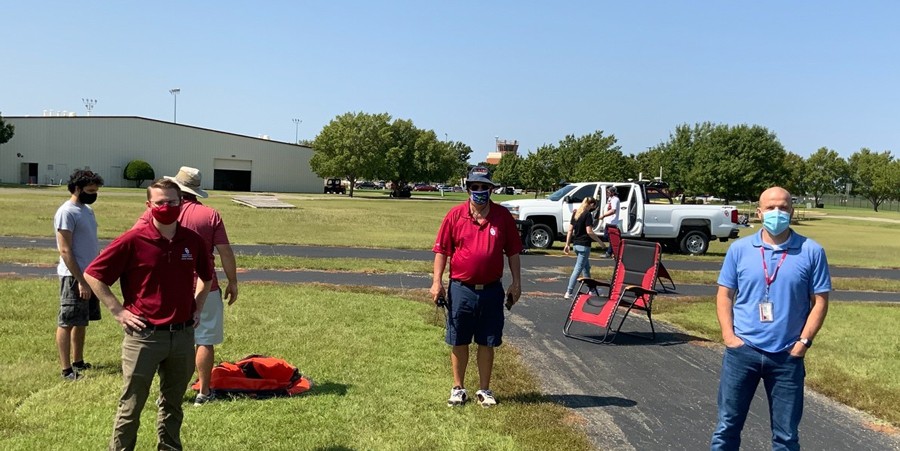
OU Researchers Conduct First Drone-Based Weather Observations At Max Westheimer Airport
Everyone has been impacted by unexpected weather events at some point in their life with consequences ranging from being mildly inconvenienced to experiencing life-threatening conditions. One community that is particularly susceptible to the weather is aviation. There has been an on-going effort to improve weather awareness for aviators with an emphasis on conditions at airports. Supported in part through funding from NASA, the OU Center for Autonomous Sensing and Sampling is working with individuals at the OU Max Westheimer Airport to conduct novel observations of the atmosphere using state-of-the-art Unmanned Aircraft Systems, or drones. Resulting measurements can be used to improve numerical weather prediction model forecasts or communicated directly to pilots to help keep them apprised of current weather conditions.
Phillip Chilson, a professor in the School of Meteorology and the director of the Center for Autonomous Sensing and Sampling said the overarching goal of the NASA project that is supporting this work is “to address the emerging needs in real-time weather forecasting to improve the safety of low altitude aircraft operations through the integration of real-time observations from autonomous systems with numerical weather prediction and flight management and safety systems.”

“The project will provide improved situational awareness to enhance safety and efficiency for both manned and unmanned aircraft, particularly for unmanned traffic management, urban air mobility and airport operations,” Chilson said.
On September 24, 2020, for the first such event in the United Stated, CASS and personnel from the OU Max Westheimer Airport completed the first set of dedicated and targeted UAS-based weather observations at a towered airport in the US.
“For this initial test, three vertical profiles, vertical ascent and descent, were flown up to 2,999’ above ground level using the OU CopterSonde,” Chilson said. “The CopterSonde is specially designed unmanned aerial vehicle developed at CASS to sample the thermodynamic and kinematic properties of the atmosphere.”
The CopterSonde flights were conducted directly from the airport within sight of the tower. During the flights, pressure, temperature, humidity, wind speed, and wind direction as a function of height were recorded and reported in real-time.
“These measurements represent a significant milestone in the use of UAS to support aviation weather and it feels good to know that OU is pushing the envelope in this area of research,” Chilson said. “However, it is recognized by the team that there is still a lot of work to do before such flights can be conducted routinely.”

